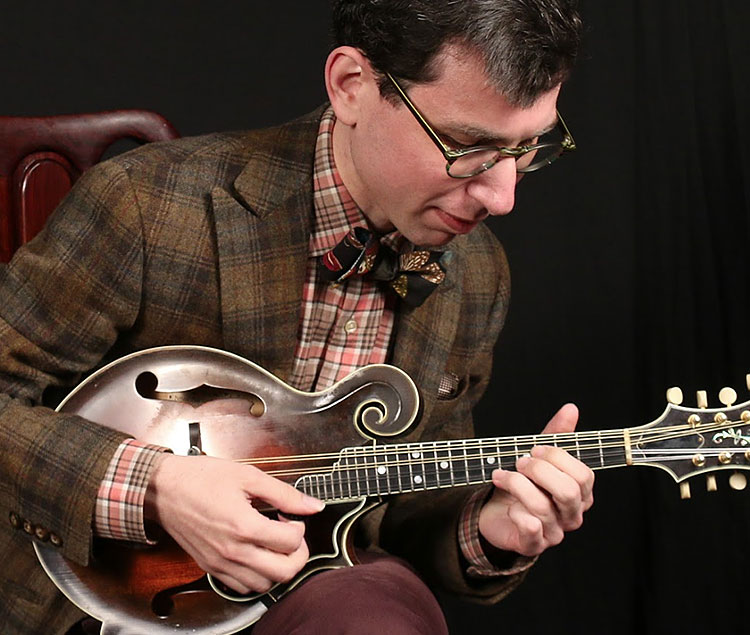In this video, Aaron talks about varying your accompaniment for “Sweet Georgia Brown” by using different voicings and rhythms, and using those ideas to play a rhythmic solo.

Course Description
If you’re playing mandolin in a swing or jazz band, most of the time you won’t be playing single-note solos, or chord-melody solos, you’ll be a part of the rhythm section, accompanying soloists or vocalists. In this eight-session course you’ll learn to play rhythm mandolin (and how to create rhythmic chord solos) with one of the world’s greatest swing mandolinists, Aaron Weinstein, who was named as one of Downbeat’s Rising Stars in the venerable publication’s 2019 critic’s poll.
Course Includes:
If you’re playing mandolin in a swing or jazz band, most of the time you won’t be playing single-note solos, or chord-melody solos, you’ll be a part of the rhythm section, accompanying soloists or vocalists. In this eight-session course you’ll learn to play rhythm mandolin (and how to create rhythmic chord solos) with one of the world’s greatest swing mandolinists, Aaron Weinstein, who was recently named as one of Downbeat’s Rising Stars in the venerable publication’s 2019 critic’s poll.
In this first session of Rhythm and Chord Solos, Aaron shows you chord voicings for playing the jazz standard “All of Me.” He also shows you the two basic rhythmic feels for playing swing and jazz rhythm on the mandolin: playing “in two” and “in four.” Then he gives you ideas for playing rhythmic chord solos using the voicings you’ve learned.
In this session, you’ll explore the swing/jazz standard "Exactly Like You"—reviewing the concepts from last session (playing in two, playing in four, rhythmic hits) and then looking at how to add “color tones” to some of the voicings for additional melodic options for both accompaniment and soloing.
In this session, you’ll learn the traditional jazz standard “Sweet Georgia Brown,” which has a very common circle-of-fourths progression. Aaron shows you how to use ii7–V7 substitutions throughout the tune.
Aaron has decided that in the fourth session of his Swing Mandolin: Rhythm and Chord Solos workshop he will introduce you to the swing and jazz standard “Undecided” in the key of Bb. Aaron walks you through two sets of chord voicings for “Undecided” and shows you how to use them to play creative rhythm on “Undecided.” He also talks about adding notes to a basic seventh chord with your pinky to create extensions and color tones like flat ninths, ninths, sharp ninths, sharp fifths (augmented), and thirteenths.
In the fifth session of Swing Mandolin: Rhythm and Chord Solos, Aaron dissects the swing and jazz standard “After You’ve Gone” in the key of F. He shows you two sets of chord voicings for “After You’ve Gone” and talks about how to use them to play creative rhythm and rhythmic chord solos.
In the sixth session of Swing Mandolin: Rhythm and Chord Solos, Aaron introduces you to one of the most popular swing and jazz standards: George and Ira Gershwin’s “Lady Be Good.” He shows you two sets of chord voicings for “Lady Be Good” in the key of G, and talks about how to use them to play creative rhythm and rhythmic chord solos.
In the seventh session of Swing Mandolin: Rhythm and Chord Solos, Aaron gives you two sets of chord voicings to one of the most-loved swing and jazz standards: “I Can’t Give You Anything But Love.”
The set of chord changes to the George and Ira Gershwin song “I Got Rhythm” has been used for so many songs and instrumentals that it has its own name in the jazz world: Rhythm Changes. In the eighth session of Swing Mandolin: Rhythm and Chord Solos, Aaron shows you a few different ways to play the ubiquitous chord progression.